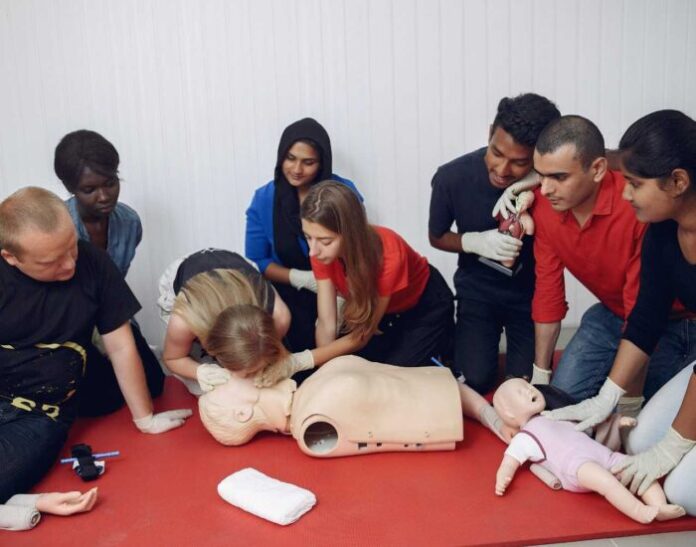Cardiac arrests, strokes, and other emergencies usually require immediate attention to prevent complications. Brain cells begin to die within minutes of a heart attack due to a lack of oxygen, leaving little time for emergency response. To avoid serious complications such as brain damage or death, bystanders should quickly administer CPR and other lifesaving measures. Here are a few resuscitation techniques you learn in certification courses:
Chest Compression
Chest compression techniques manually pump blood to buy time for emergency response teams to arrive with defibrillators and other equipment. The technique involves placing one hand on top of the other and pushing hard and in rhythm in the center of the chest. CPR courses often teach chest compression techniques to help maintain blood circulation to vital organs, such as the brain and heart. The chest should rise fully between compressions to allow blood to flow without stopping.
Compressions must also be performed without interruption to maintain blood flow and increase the victim’s chances of survival. Courses emphasize proper hand placement to achieve effective compressions, making the technique less tiring for the rescuer. Instructors offer hands-on practice with manikins to help you develop and achieve the correct rhythm, pressure, and rate.
Rescue Breaths
Cardiopulmonary resuscitation involves administering rescue breaths after several chest compressions. The rescue breaths deliver oxygen to the lungs if the victim cannot breathe on their own. This technique requires tilting the head back, lifting the chin, and pinching the nose to deliver breaths efficiently. Administering rescue breaths also involves creating a seal over the victim’s mouth to deliver the most air to the lungs.
Courses teach participants how to open the airway and administer rescue breaths in between chest compressions. They teach strategies on how to seal your mouth over the victim’s mouth and observe the chest rise to confirm that air is entering the lungs. Rescue breaths are required for infants and children, especially for drowning emergencies. Adult-only courses may emphasize compression-only techniques to allow you to perform a resuscitation when rescue breath administration isn’t practical.
AED Use
Automated external defibrillators (AEDs) deliver an electrical shock to help restart a heart that has stopped or to restore normal rhythm. The operation involves turning them on, attaching electrode pads to the victim’s bare chest, and following verbal prompts from the device. Certification courses offer step-by-step guidance on how to operate AEDs and resume other techniques like chest compression.
Learning how to use an AED effectively improves survival rates in emergencies involving sudden cardiac arrest. The technique is part of courses designed for healthcare providers, such as Basic Life Saving (BLS) and Advanced Cardiac Life Support (ACLS). You’ll learn how to use different types of AEDs, how to assess the victim’s response, and the next steps.
Get Your CPR Certification Today
Cardiopulmonary resuscitation training gives you the skills to perform various techniques on adults, children, and infants. Training centers offer specialized courses for healthcare professionals, non-healthcare providers, and instructors. You may also learn Heartsaver first aid and choking response techniques. Contact a CPR training center today to find out more about the different resuscitation techniques.

